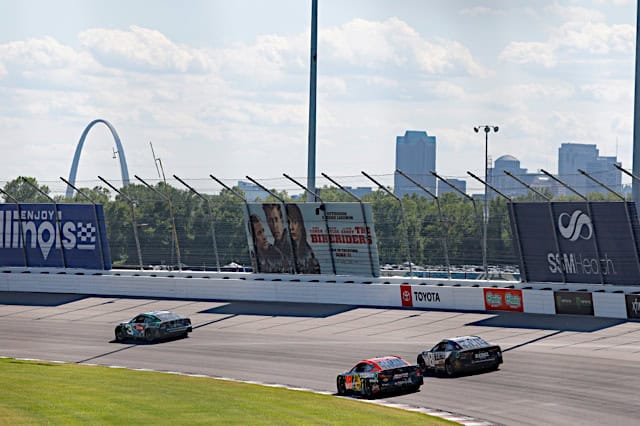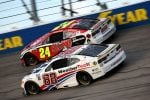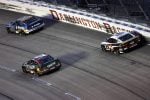World Wide Technology Raceway at Gateway has only hosted the NASCAR Cup Series for the past four years but it is far from a new facility.
Race fans might recognize the Gateway Arch in the logo or recall one of the track’s previous names, be it Gateway International Raceway or Gateway Motorsports Park. While the famous Arch itself is in St. Louis, Missouri, the track sits just 10 minutes to the east in Madison, Illinois.
One thing many fans are probably less aware of is the facility is almost as old as the Arch. The most recognizable feature of the St. Louis skyline predates what was originally known as St. Louis International Raceway by a mere two years: it was first completed in 1965 while the track opened in 1967.
In the beginning, WWTR was a dragstrip, just a one-eighth-mile strip of asphalt before being converted to a quarter-mile in 1971. The grounds were multipurpose beyond just racing. In 1972, Evel Knievel put on one of his famed stunt jumps, where he launched his motorcycle over a row of 10 cars at the track.
Then, in 1985, a 2.6-mile road course was integrated into the facility, making the dragstrip part of the road course, similar to what is seen currently at Sonoma Raceway.
Once the road course was added, the assortment of racing on display expanded. While the dragstrip had been used primarily for regional competitions, the road course hosted series such as the ARCA Menards Series, IMSA, and the Trans-Am Series throughout the late 1980s and early 1990s.
In 1994, the complex was sold, and the new owner, a former promoter for the Grand Prix of Long Beach, razed the entire grounds. The existing tracks were torn down and replaced by a new dragstrip and a 1.25-mile asphalt oval track.
Like Darlington Raceway, the track that preceded it on the 2025 Cup Series schedule, WWT is egg-shaped in the sense that the two straightaways are not exactly parallel. At Darlington, this quirk was made during construction to preserve a minnow pond, but the reason at Gateway was simply because turns 1 and 2 were designed to have a tighter radius than turns 3 and 4.
The new oval was completed and ready for action in 1997, hosting the NASCAR Xfinity Series, the first time NASCAR held a sanctioned event at the facility. The CART tour was also part of the maiden season on the oval, while NHRA raced on the new dragstrip.
The inaugural Xfinity Series race, in July 1997, was plagued by intense heat, with some competitors needing relief drivers to finish the 300-mile race. A multitude of fans were treated for heat-related issues, and one fan died of complications from the elements, leading to the race being run in October the following season.
Tragedy struck again in 2004, as top fuel drag racing competitor Darrell Russell was killed in a qualifying run. His remains the only on-track fatality to occur at the complex.
But racing not only remained at the track – it expanded. The NASCAR Craftsman Truck Series joined the slate of events in 1998 and continued, along with the Xfinity tour, racing at the speedway through 2010.
In 2011, the track was sold, putting its long-term future in doubt. There were no sanctioned events held in that year, and only NHRA drag racing in 2012. The new ownership invested extensively in the property, upgrading the road course as well as adding an off-road venue and a karting facility.
Once the upgrades kicked in, many of the divisions that competed at the track previously began to return. First, the Truck and Xfinity series teams were back in action at the oval beginning in 2014. Then in 2017, the IndyCar Series returned as well after a 14-year hiatus.
Two years later, World Wide Technology purchased the naming rights to the facility, branding it World Wide Technology Raceway, which permitted the leadership to further expand, adding an adjacent golf course.
It all led to the ultimate objective of securing a NASCAR Cup Series race, which finally became a reality in 2022. In 1997, when the track first began hosting NASCAR, it seemed inevitable that Cup would end up at the Gateway to the West.
While that took another 25 years to come to fruition, it seems that NASCAR racing in the shadow of The Arch is now here to stay.
Frank Velat has been an avid follower of NASCAR and other motorsports for over 20 years. He brings a blend of passionate fan and objective author to his work. Frank offers unique perspectives that everyone can relate to, remembering the sport's past all the while embracing its future.
Follow along with @FrankVelat on Twitter.




